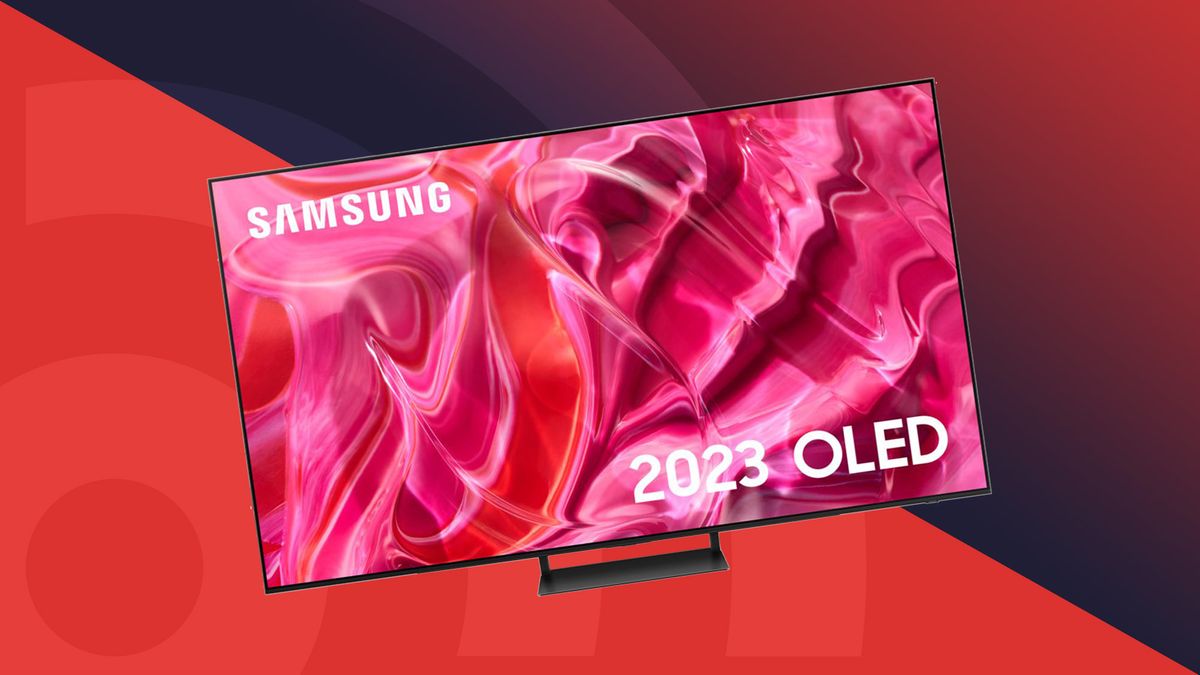
The best Samsung TV 2024: our top Samsung QLED picks
BEST SAMSUNG TV: QUICK MENU
The best Samsung TVs are at the top of the TV pile in terms of build, picture quality, and features. But it’s worth bearing in mind the best Samsung TV for you isn’t always the most expensive model in the line-up as there’s much more to choose from.
Samsung makes a lot of the sets featured in our best TVs guide. It’s also a versatile brand, creating some of the best OLED TVs, such as the brilliant Samsung S90C (our 2023 TV of the Year) QLEDs such as the Samsung Q80C and mini-LEDs (Neo QLED) such as the Samsung QN90C, giving people a lot of different options.
We know how Samsung measures up to not only the competition, but also previous generations of Samsung TVs having reviewed hundreds of TVs in our time They also appear in our best 55-inch TVs and best 65-inch TVs guides, some of the most popular sizes around,
Whether you’re a Samsung fan or newbie who wants to know what Samsung TV is best for sport, gaming and more, check out our list below.
The quick list
If you want to quickly find the perfect Samsung TV for you, try this list – you can also get a more in-depth write-up of any particular model by clicking the TV link!
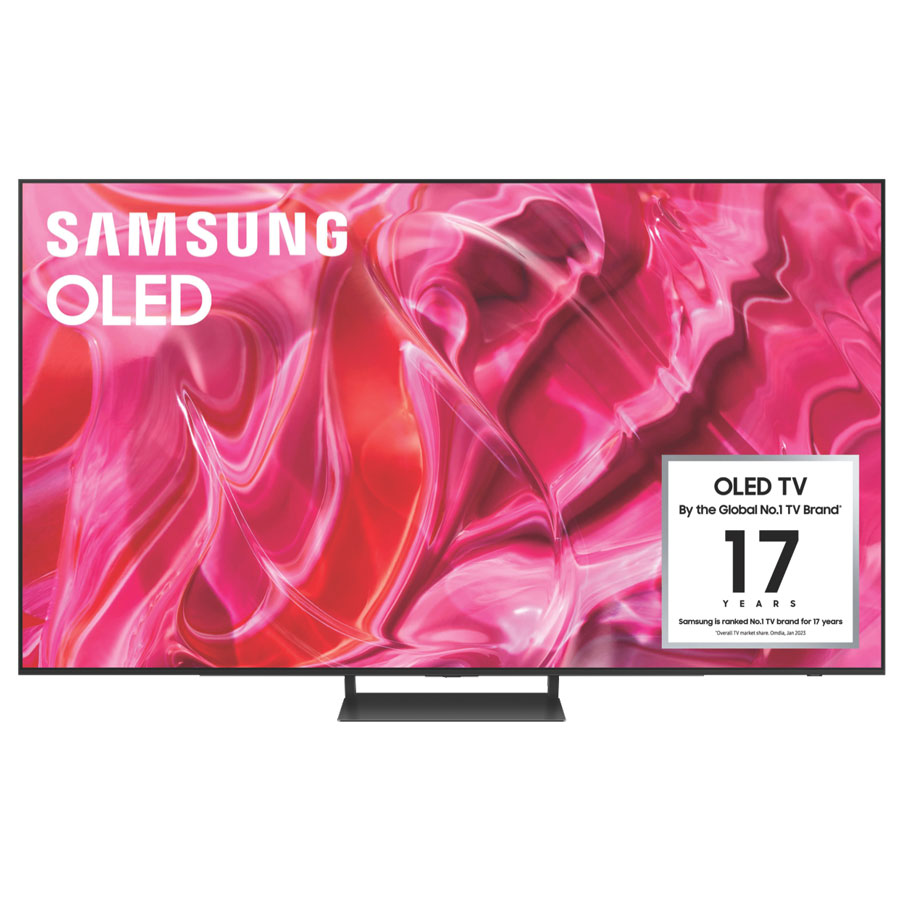
Best overall
Our top TV that we think will suit most people thanks to its stunningly bright, contrast-rich pictures and excellent gaming support. Truly great value for a QD-OLED.
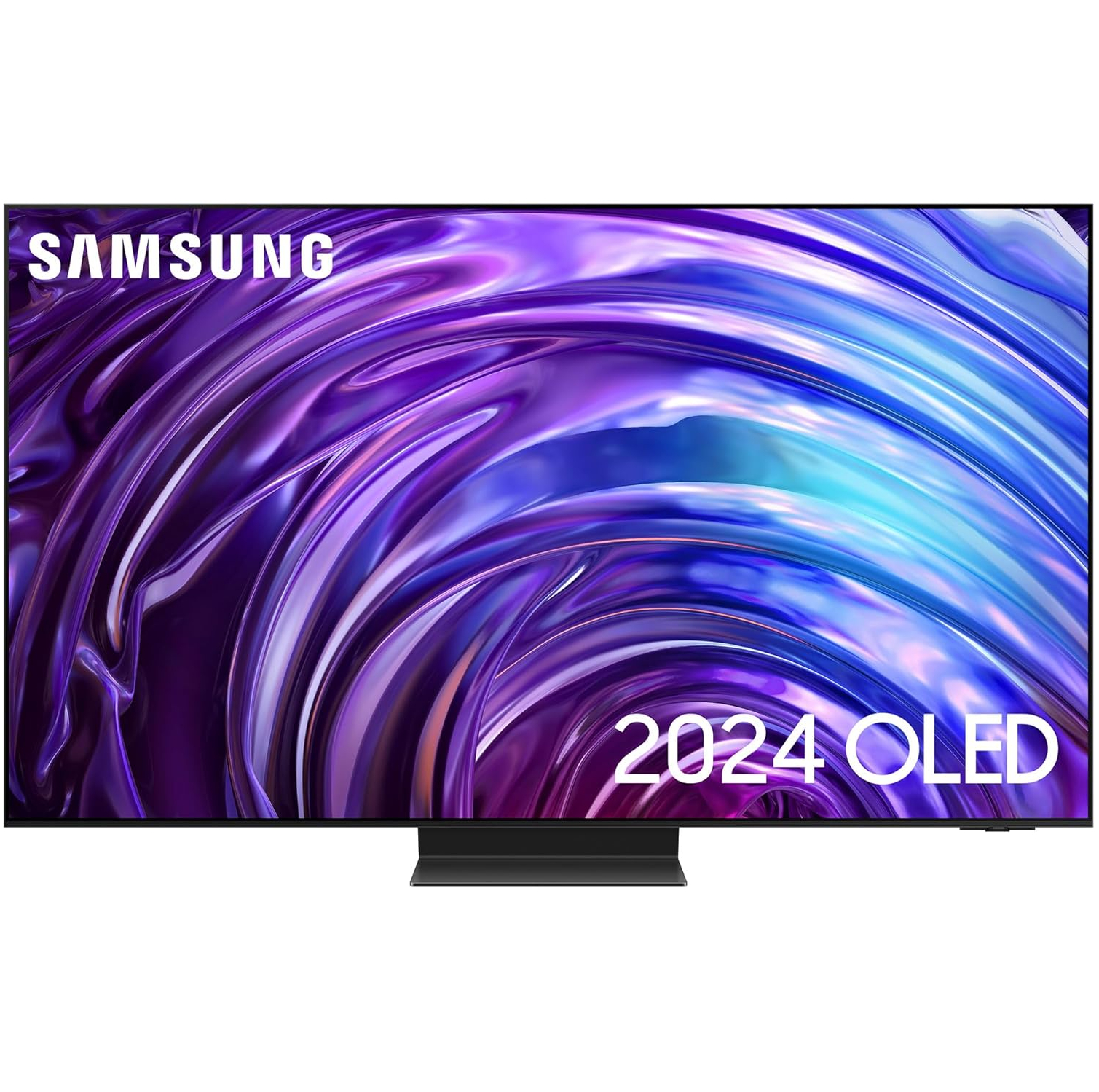
Best premium
Impeccable picture quality, excellent gaming prowess and a stylish design make the Samsung S95D the very definition of a premium TV experience.
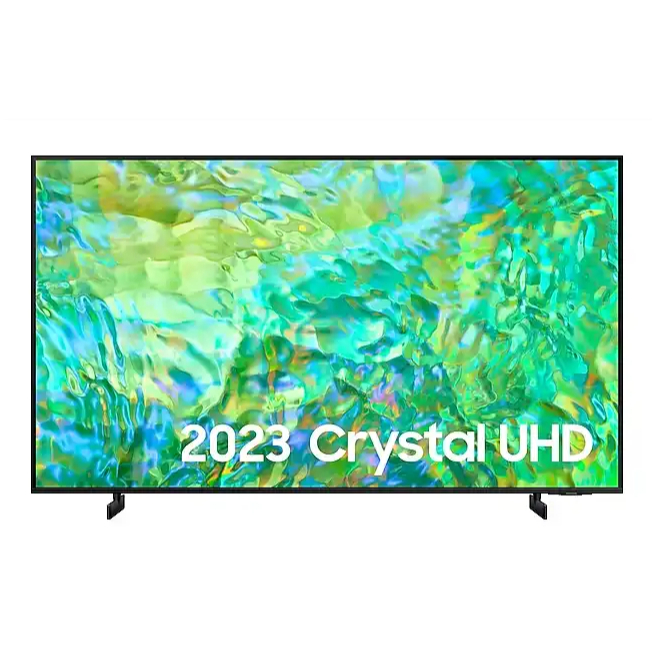
Best budget
A well designed TV with a picture quality that has punchy, vibrant color, Samsung’s CU8000 is feature packed. Just don’t expect the complete package.
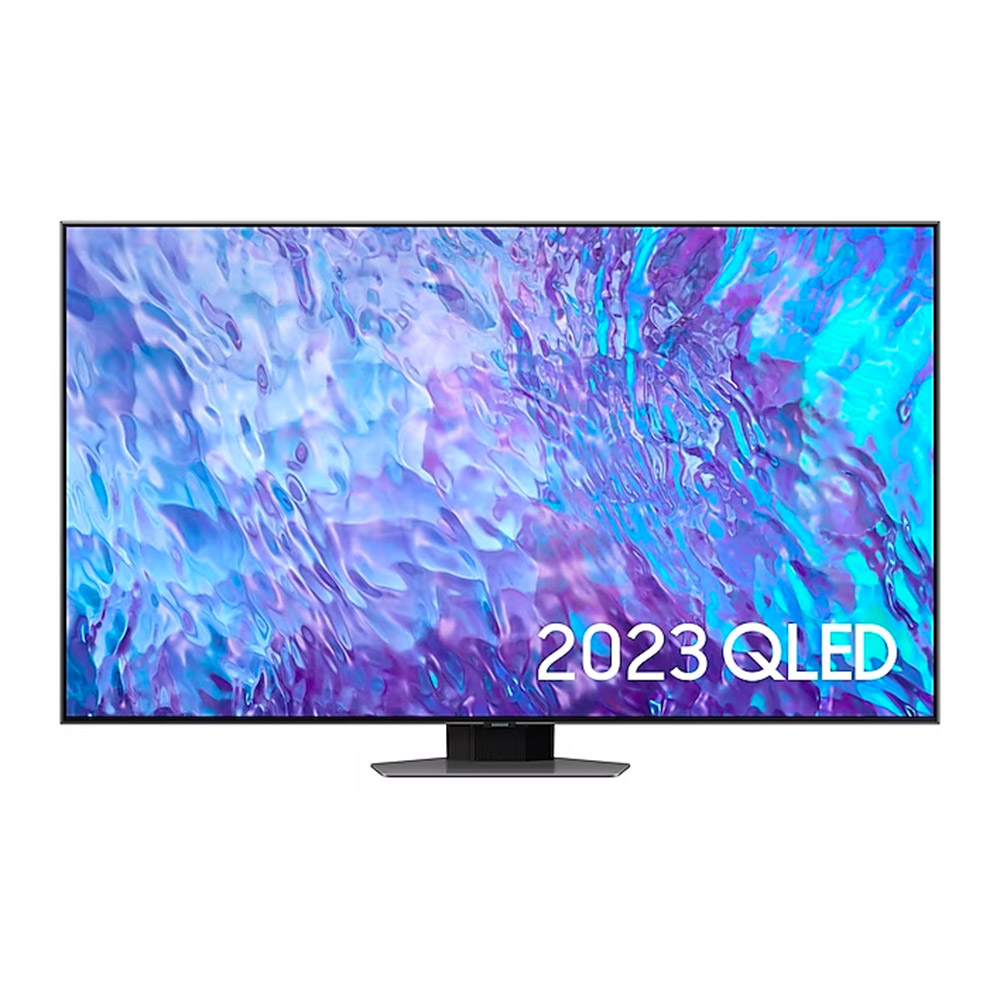
Best mid-range
A well-priced Samsung TV that delivers HDR pictures with surprisingly great lighting control. Buy it if you want brightness and color but can’t afford a mini-LED TV.
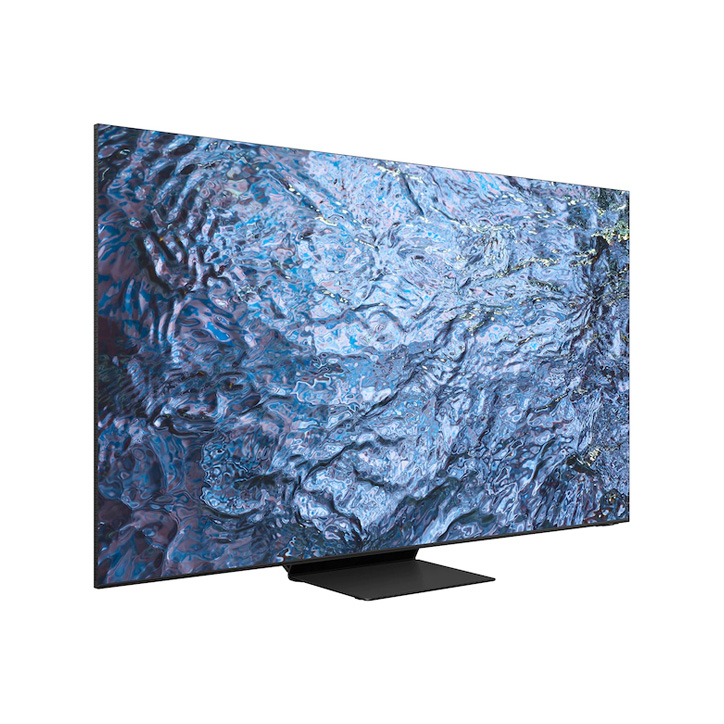
Best mini-LED
An expensive pick, but it delivers excellent 8K upscaling as well as spectacular brightness and contrast. We also rate this TV for its great off-axis viewing performance.
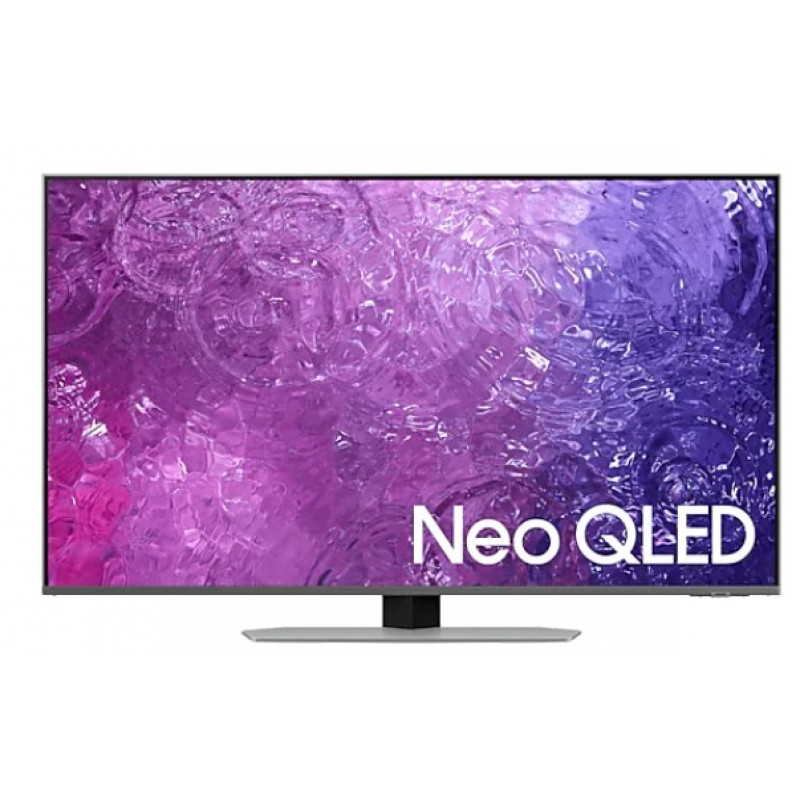
Best 4K mini-LED
This 4K mini-LED boasts high brightness and an anti-glare screen, making it ideal for daytime viewing. A solid choice if you’re looking for a gaming TV, too.
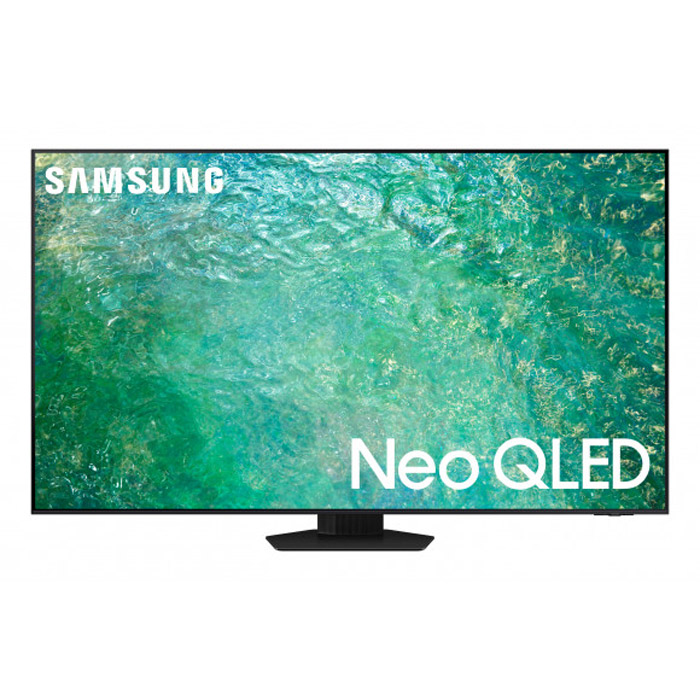
Best affordable mini-LED
If you want a less pricey Samsung mini-LED TV, this is the one for you. It doesn’t match the brightness of more expensive models, but performance is similar.
The best Samsung TVs of 2024
Why you can trust TechRadar
We spend hours testing every product or service we review, so you can be sure you’re buying the best. Find out more about how we test.
The best Samsung TV overall
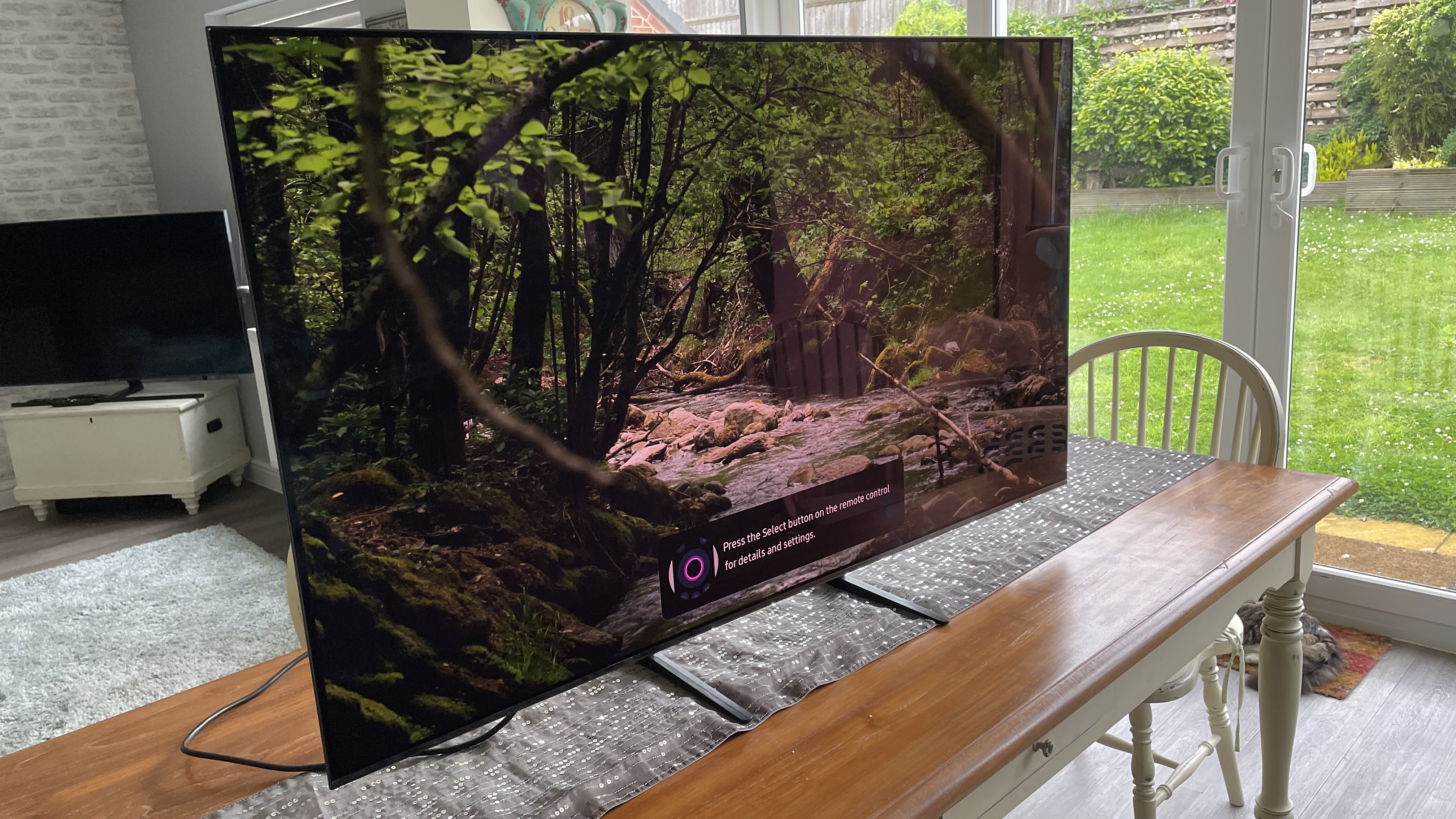
The Samsung S90C is our top pick to suit most people. It comes with a great range of connectivity options and gaming support, with full 4K 120Hz and variable refresh rate gaming graphics across all four of its HDMIs. It also has Samsung’s Neural Quantum 4K processor, which uses 20 neural networks to introduce multiple ‘AI’-based refinements to the way the TV treats incoming sources – including better upscaling of HD and SD content to the screen’s native 4K resolution.
Picture quality is stunningly bright here, presenting you with contrast-rich pictures. The S90C might not give you the full 2023 QD-OLED experience you’d get with Samsung’s S95C further down in this list, but it still manages unlock a higher level of brightness and color depth than other OLED’s at the same price. It’s also watchable from almost any viewing position.
Design-wise, the Samsung S90C has an incredibly thin panel, especially at its edges. It’s a little chunkier in the middle because that’s where its external connections/processing box is. Some people who don’t like cables might want an external box instead, but this design is likely one of the reasons that the S90C is excellent value.
The Samsung S90C is great value for a QD-OLED. It doesn’t cost that much more than LG’s C3 model, but the boost you get in brightness and sound quality is worth the extra cost. Compared to the S95C it’s not as bright, but there are times where the S90C arguably retains a touch more consistency and balance than its more expensive siblings.
Read our full Samsung S90C review
The best premium OLED Samsung TV
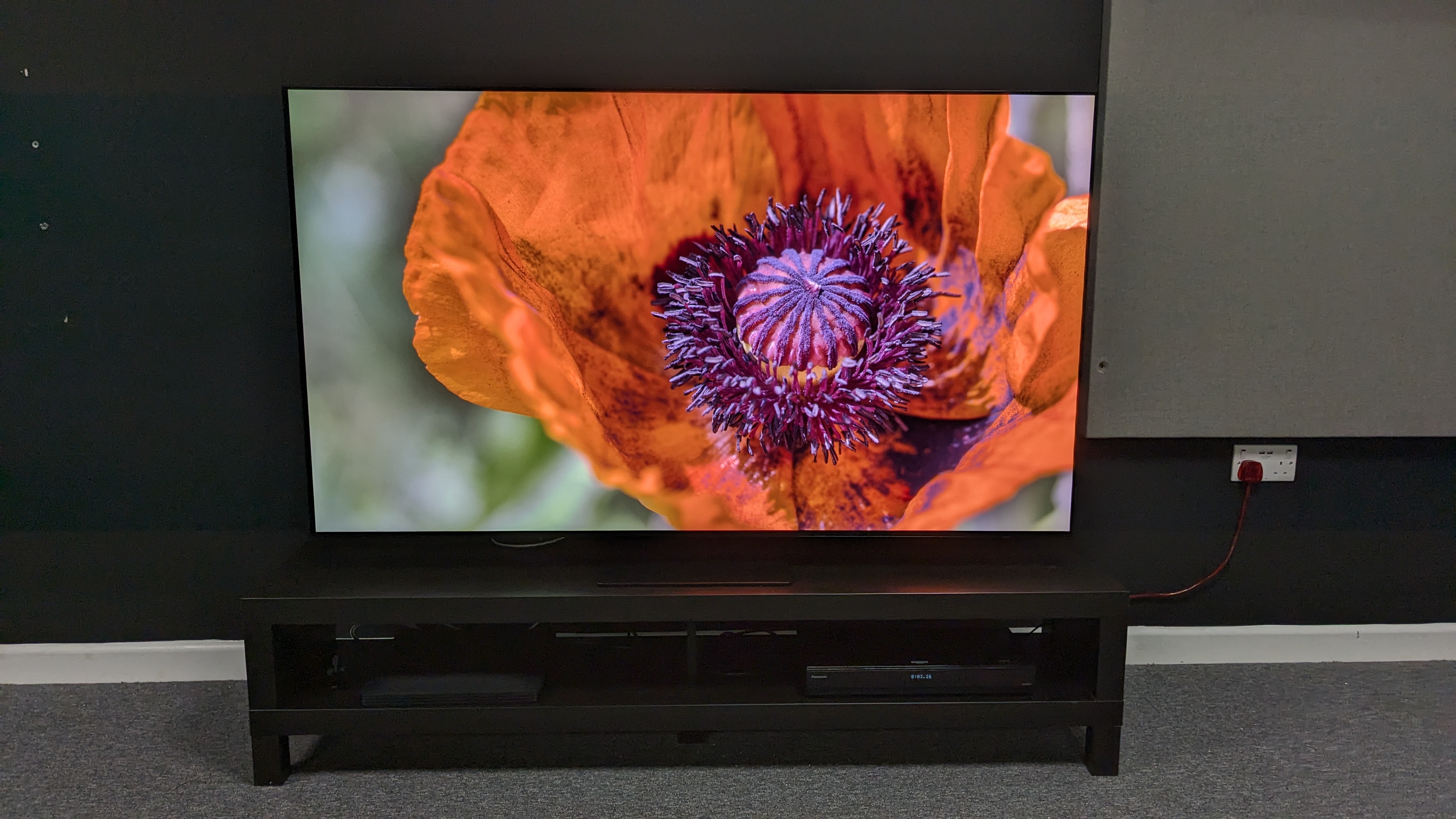
The Samsung S95D is the company’s 2024 flagship OLED TV. It carries many of the same great features as its predecessor, the Samsung S95C, but adds excellent anti-reflection tech that successfully addresses one of OLED tech’s biggest issues: screen reflections.
Maintaining excellent picture quality despite its matte screen (part of the anti-reflection measures), the S95D also offers incredible picture detail, with refined textures and the rich contrast, bold colors and high brightness you’d expect from a QD-OLED TV. You may need to tweak some picture settings (black crush is present in Filmmaker Mode) but once you do, the S95D delivers an outstanding picture.
The S95D also serves as an excellent gaming companion, with four HDMI 2.1 ports all supporting up to 144Hz refresh rate, VRR (with AMD FreeSync Premium Pro), ALLM and more. Plus, it comes with Samsung’s useful Gaming Hub, which locates all gaming features in one place.
Design is another highlight, with a sleek, modern look and a ‘floating’ appearance thanks to its unique stand design. Even the built-in audio and Tizen smart TV system pitch in to make the S95D great.
A TV of this quality predictably carries a high price tag, but if you can stretch your budget, the S95D is worth the money.
The best budget Samsung TV
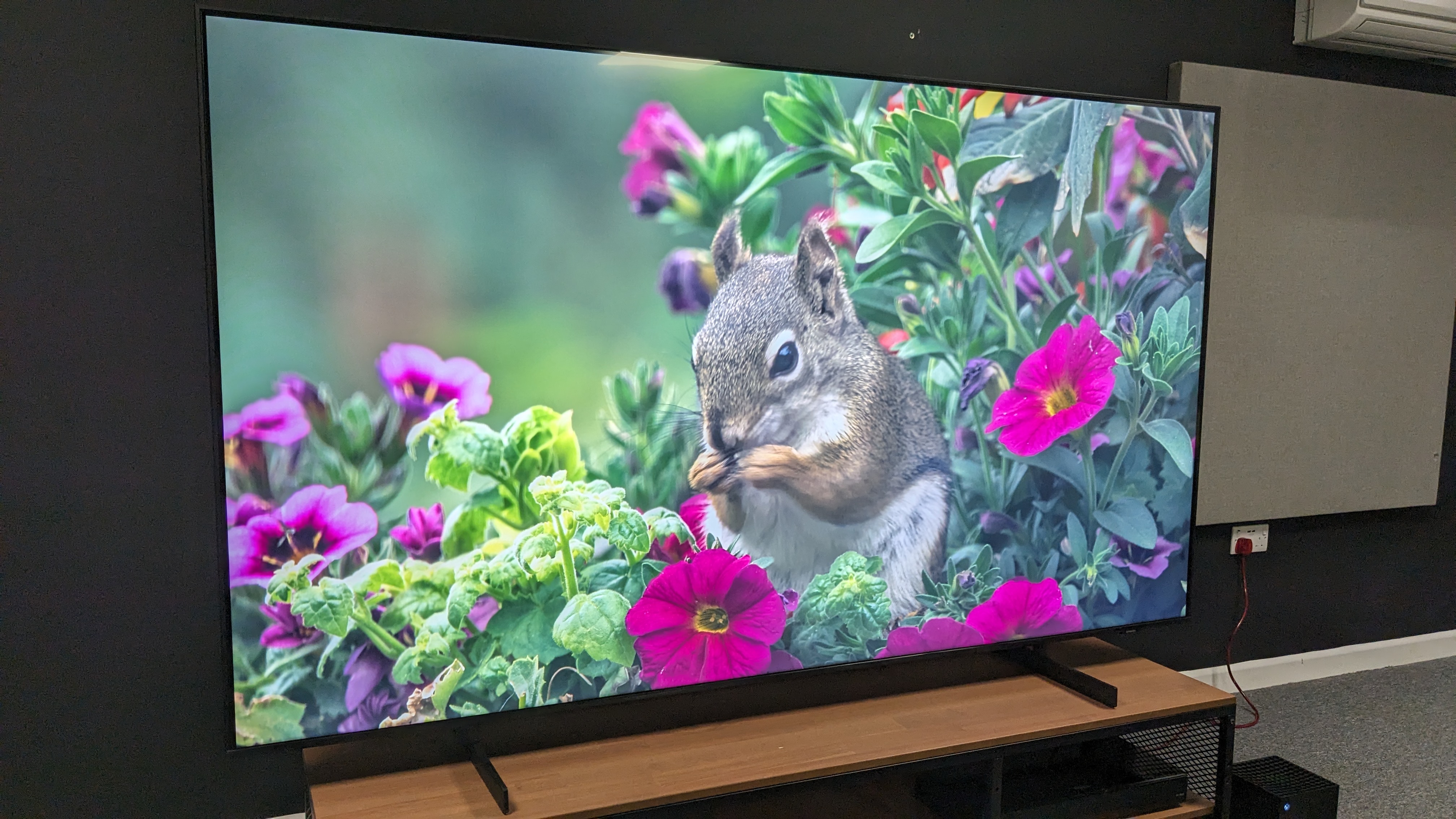
The Samsung CU8000 is the best budget option in Samsung’s 2023 lineup that we’ve tested. Although its picture many not be perfect and it’s missing some gaming features, there’s still plenty of positives including vivid colors, a great suite of features, an intuitive smart TV platform and an attractive design that feels premium – all for a very competitive price.
The Samsung CU8000’s picture is admittedly a mixed bag. During brighter scenes, it excels with good levels of brightness and punchy colors that make it feel more premium than it is. Unfortunately, due to its edge-lit backlight, it does suffer from black uniformity (the ability to evenly display dark tones across the screen) issues and its contrast levels are lacking. However, this was noticeable on the larger 75-inch screen we tested and although it may be an issue on smaller models, such as the 43- and 50-inch, it’s likely to be as prevalent.
Gaming performance on the CU8000 is solid. During graphically intense scenes, the CU8000 handled fast paced battles in Battlefield V well, as quickly switching between targets felt easy enough. The CU8000 is missing some features that hold it back from gaming greatness such as 120Hz and VRR support, but a 10ms input lag time and a useful Game Hub with cloud gaming options from Xbox and Nvidia mean this has plenty of gaming chops at this price.
It can’t all be good news, unfortunately, as aside from the mixed picture performance, the CU8000’s audio is lacking, with a very thin, tinny sound, which means it will definitely benefit from a soundbar.
But for the money it costs, roughly priced at $499/£499/AU$995 for a 55-inch at the time of writing, there’s still plenty of great features and performance with the CU8000 that means it’s the best budget Samsung you can get.
Read our full Samsung CU8000 review
The best mid-range Samsung TV
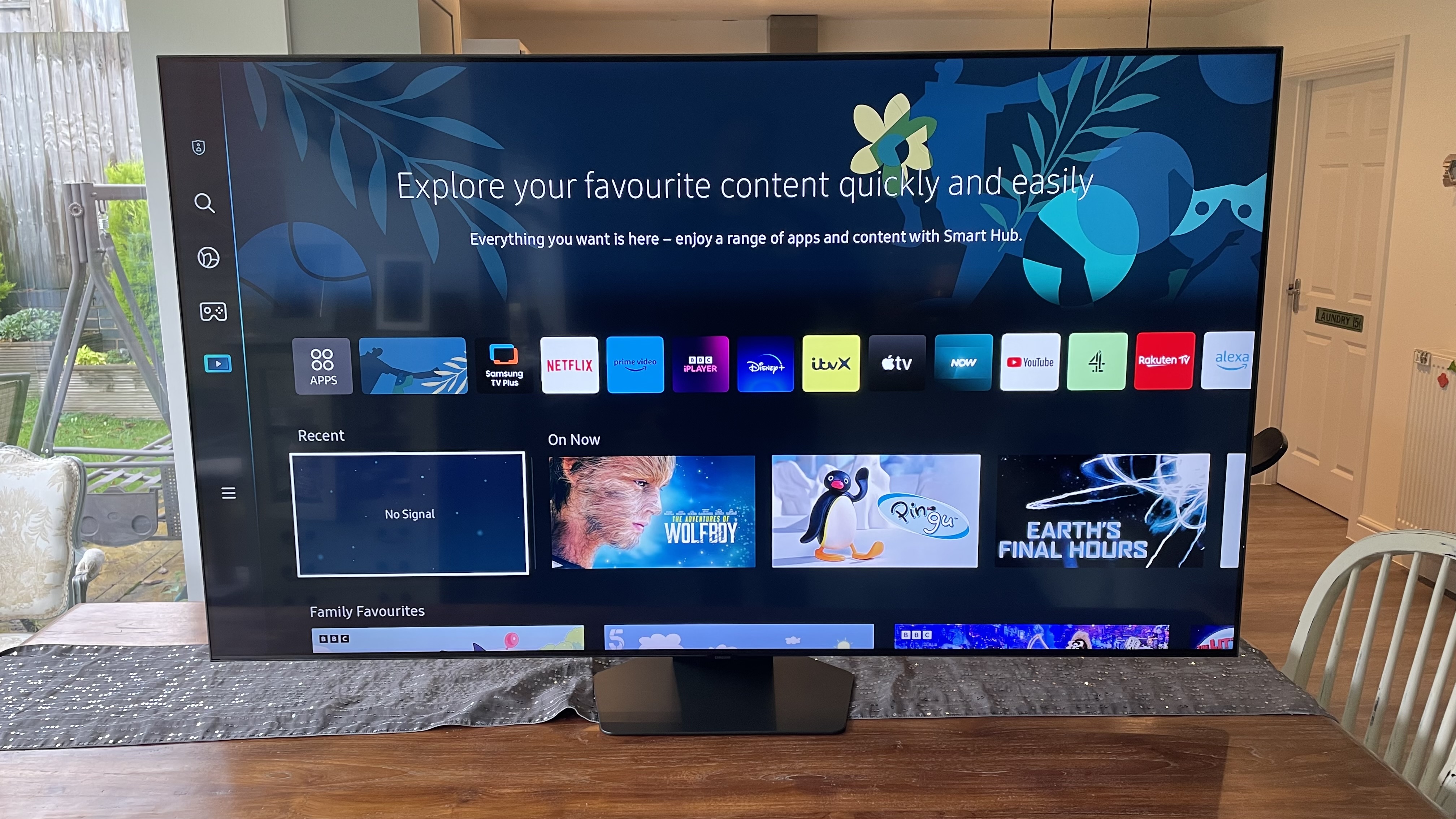
The Samsung Q80C may lack the key screen technology found in Samsung’s higher-end TVs for 2023 – mini-LED backlighting to be specific – so it’s not as advanced as many of the other picks in this list. But it sits in an interesting price bracket, occupying a middle-ground between Samsung’s flagship and budget TVs, which is why it’s our top mid-range pick.
Its robust but rather run-of-the-mill design means it’s not exactly exciting. However, things start to look up with its connections because it has four HDMI ports that handle almost all of the latest console and PC gaming features, including 4K 120Hz, variable refresh rates, and automatic low latency mode switching – this is why it’s also one of our best gaming TV picks.
The Samsung Q80C’s Quantum Dot colours and excellent light control allow it to deliver a mid-range masterclass in how to deliver maximum picture quality for your buck. Under the impressive control of Samsung’s Neural Quantum Processor 4K imaging engine, the Q80C’s picture proves to be excellent, with its contrast, colour, brightness and sharpness falling much less short of the efforts of Samsung’s more premium TVs than we expected during our testing.
Read our full Samsung Q80C review
The best mini-LED Samsung TV
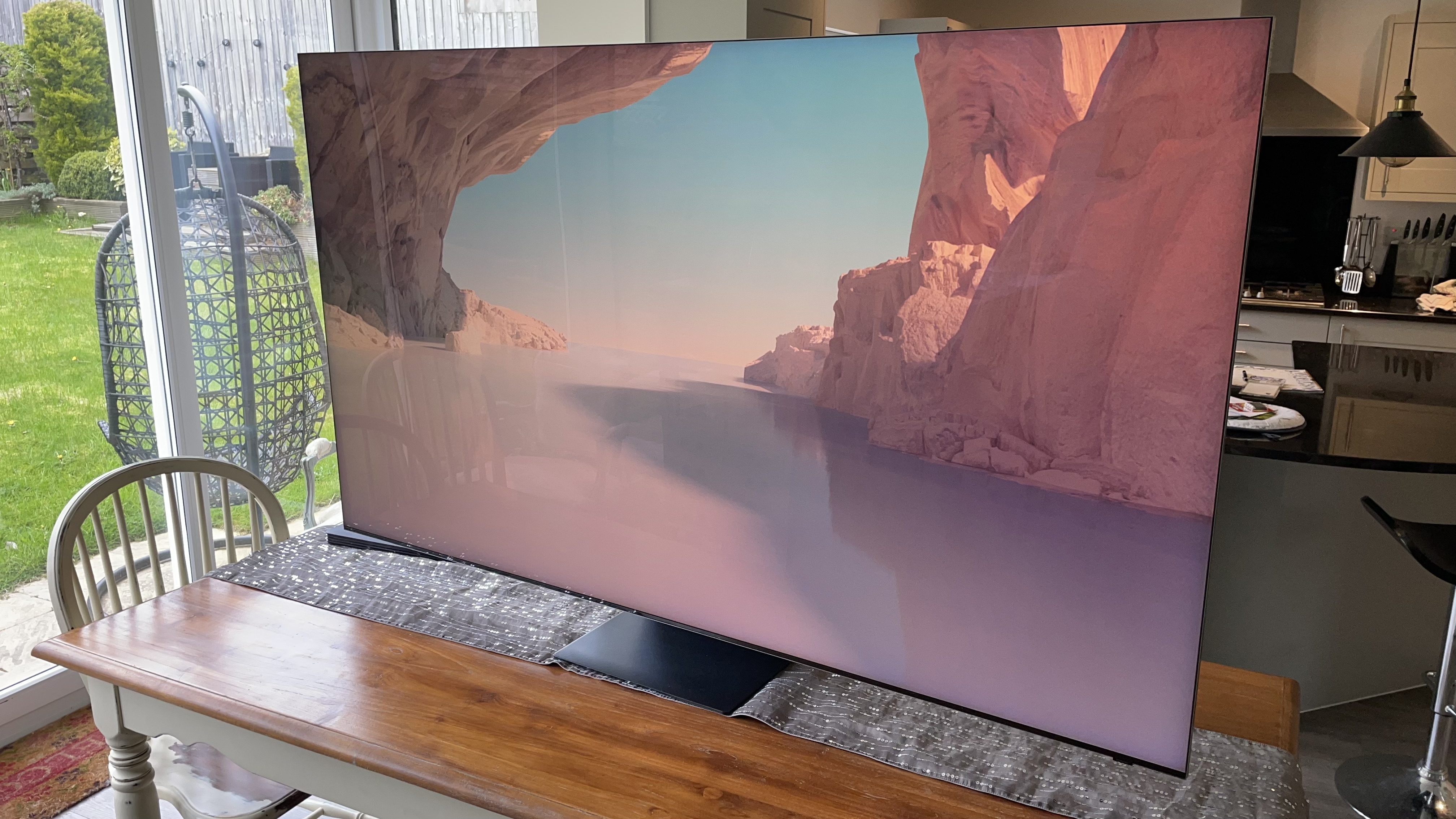
The Samsung QN900C takes home entertainment to a whole new level with one of its newer mini-LED panels. The mini-LED lighting in the QN900C uses LEDs 40 times smaller than those found in Samsung’s regular LED TVs. This means that thousands more of them to fit into the same screen area. This has the potential to deliver brighter images as well as more effective local light control. An external box also brings you every connection you’d need – even if you’re a cutting edge gamer.
As you might expect from the best 8K TV in this guide, picture quality here is jaw-droppingly good – not least because 8K really does make a difference. This is especially true with native 8K content, if you can find any, but Samsung’s ever-improving 8K upscaling also delivers denser, richer pictures with high-quality 4K sources.
The great thing about the Samsung QN900C is it looks stunning when it’s off, too. This is thanks to an almost non-existent frame around its screen, a sleek perforated metallic finish to its side panels and the way its rear panel manages to be as flat and almost as clutter-free as the screen. The minimalist design is helped by an external connection box, hooking up to your TV with a single cable.
The Samsung QN900C isn’t cheap. But it delivers stunning picture quality, spectacular color and brightness, terrific sound and outstanding blacks. If money’s no object and you’re able to feed it a diet of high quality (ideally mostly 4K) sources, then the QN900C is certainly better than rivals. This is why it’s our top pick if you’re looking for a mini-LED screen that brings the 8K detail with it.
Read our full Samsung QN900C review
The best 4K mini-LED Samsung TV
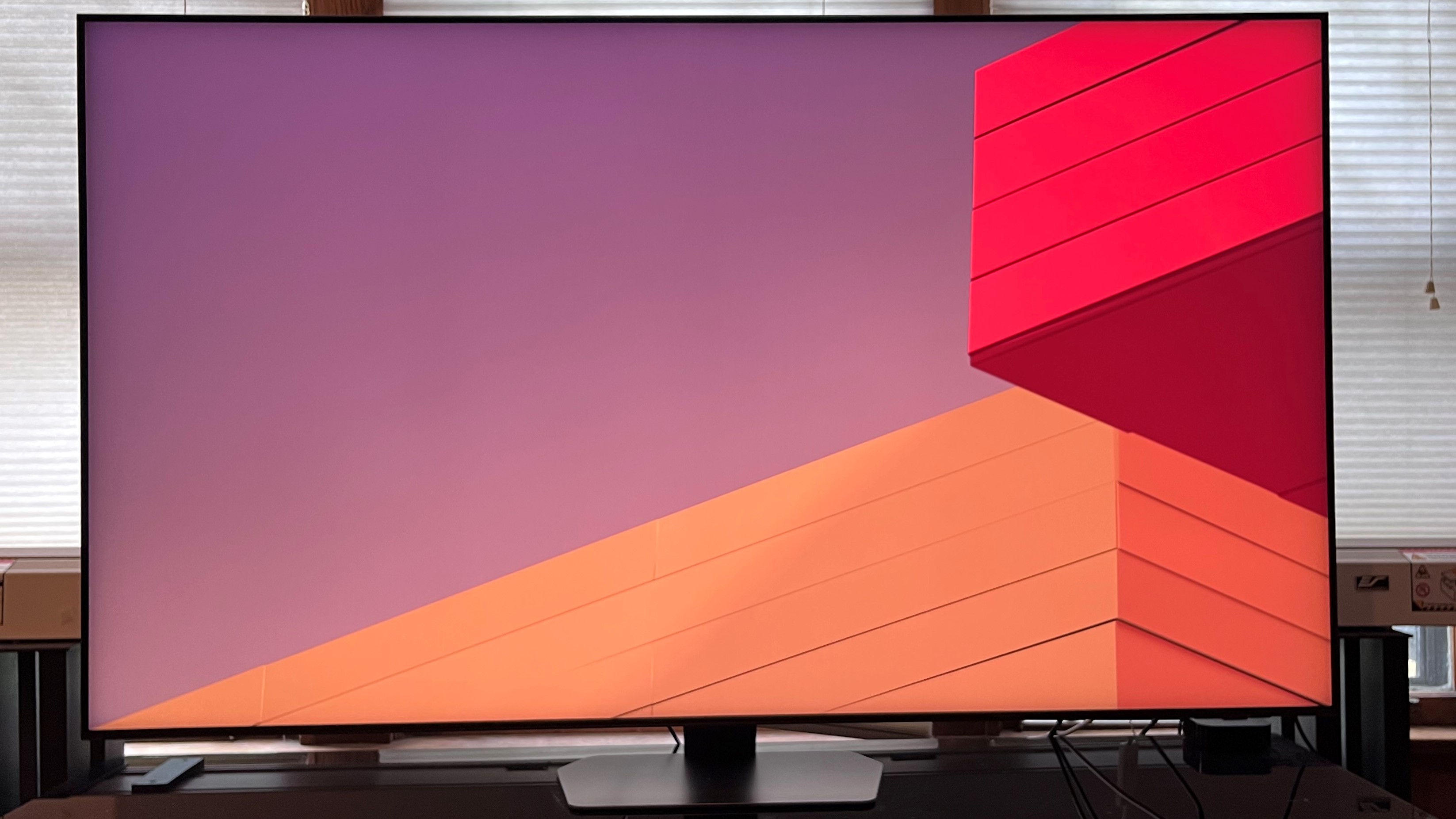
The Samsung QN90C is one of the latest models in the brand’s Neo QLED series and our top pick if you’re looking for a 4K mini-LED panel, which offers high brightness and impressive all-around video performance. Its anti-glare screen makes the QN90C a great option for daytime sports viewing, and its comprehensive gaming support, including four 4K 120Hz-capable HDMI 2.1 ports, also makes it a perfect choice for console- or cloud-based gaming.
The Samsung QN90C delivers high peak brightness with deep blacks with detailed shadows and only some backlight blooming. The 65-inch Samsung QN90C TV we tested delivered impressive peak HDR brightness, with the set measuring 1,787 nits in its Movie picture mode.
The Samsung QN90C has a slim design and bezel with a sturdy hexagonal plate stand. The TV has a strong visual look and we like its Ambient Mode (Samsung feature for displaying artwork and photos in a low-power mode).
The Samsung QN90C isn’t cheap, but you’ll be able to find one for less than the likes of the QN95C. What’s more, unless you’re an ardent videophile, the differences between the two won’t appear dramatic. There are budget mini-LED alternatives from other brands like TCL and Hisense that you can find for less, but when it comes to features and design sophistication, they won’t be able to match the QN90C.
Read our full Samsung QN90C review
The best affordable mini-LED Samsung TV
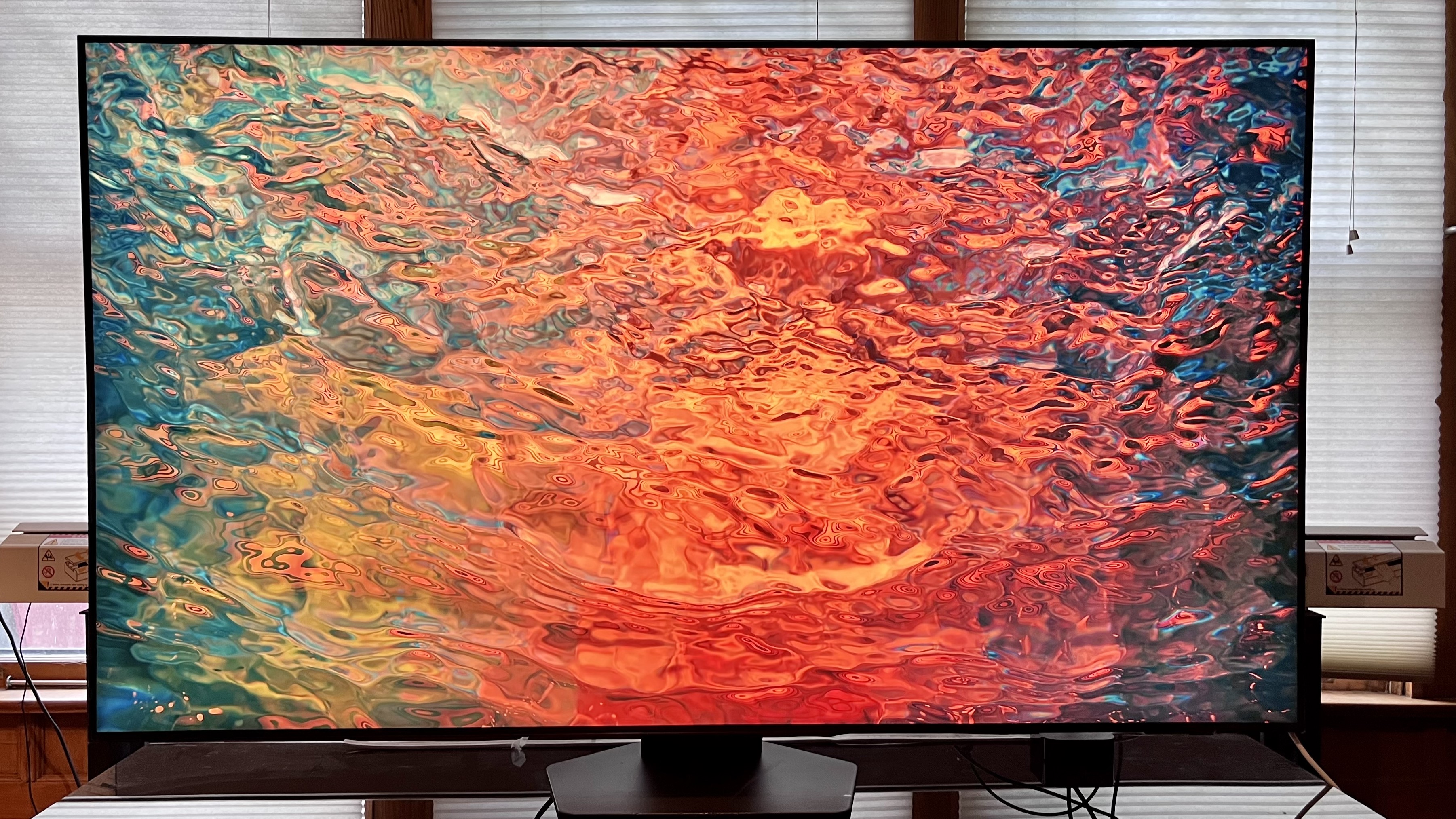
Samsung’s entry-level Neo QLED series, the QN85C, brings the benefits of mini-LED backlighting to a lower-cost TV, which is why it’s our more affordable mini-LED pick from Samsung.
The Samsung QN85C delivers solid overall picture performance and has an average peak brightness, which you’d expect at this price. But blacks are deep and there are detailed shadows with only some backlight blooming. While it lacks the powerful brightness and anti-glare screen of its step-up Samsung Neo QLED siblings, the QN85C series is a great option for gaming, thanks to its four HDMI 2.1 inputs that support 4K 120Hz input, and also performs well for watching movies.
You’ll need to use another sound system or soundbar here. And while the QN85C will work with any soundbar, the TV’s Q-Symphony feature lets you combine the TV’s built-in Dolby Atmos speaker system with a select Samsung soundbar for an enhanced Atmos experience.
The QN85C costs less than the company’s other mini-LED-backlit models while offering many of the same features. If you’re willing to look outside of Samsung, there’s tough budget mini-LED competition. But the QN85C’s appealing design and strong feature set nonetheless make it well worth consideration if you’re after a more affordable mini-LED panel.
Read our full Samsung QN85C review
How to choose the best Samsung TV
With so many models to choose from, finding the best Samsung TV for you isn’t always easy. But before you dive into the detailed specs of each model, here are a few key things we think you need to consider.
The first is budget. You might be able to bump up the price you can spend a little if you find the perfect TV – or find a great deal in the Black Friday sales – but it’s a good idea to set a limit to begin with so you don’t fall in love with the unrivalled images and features of a TV that’s well above your budget.
Next up: size. It’s tempting to always assume bigger is better when it comes to TVs. However, the size of the screen you should buy needs to be dictated by how far away you’ll be sitting from it.
Many manufacturers, including Samsung, recommend sitting between 1.5 and 2.5 times the TV’s diagonal screen size to find your perfect viewing spot. Get out the tape measure and ensure you have enough space to fit the TV and enough room between the TV and where you plan to sit.
In our best Samsung TV guide above, there are also a range of panel types – like LED and QLED – and HDR capabilities to consider.
Finally, if you’re willing to buy a soundbar, you don’t need to agonise about audio. However, if you’d like an all-in-one cinema system, consider a TV that delivers great audio as well as a fantastic picture, like the Samsung QN900B Neo QLED 8K.
And do you even need a Samsung TV? There’s a lot to love about Samsung’s TVs, but it may also be worth your time to take a look at our best LG TV and best Sony TV guides as well.
Are Samsung TVs any good?
Considering you’ve made it this far, we’re guessing you had Samsung in mind. But why else would you look for the best Samsung TV?
You’ll find multiple Samsung TVs across our guides. The flagship models are generally class-leading in terms of technology, while the more affordable options don’t cut the wrong corners; they deliver excellent value for money. Samsung’s Tizen OS is one of the best smart TV platforms too, although some of us feel that the most recent changes to its user interface were a step backwards rather than forwards. But it’s still an excellent OS.
The one big downside that applies to all current Samsung TVs is that they don’t support Dolby Vision, an HDR format that delivers higher brightness and better colors than HDR10. Samsung TVs support all the other key ones, but it does mean you won’t benefit from Dolby Vision content on devices such as the Xbox Series X.
That’s a minor niggle, though. The sheer size of Samsung’s TV range – and its constant launching of even better models – means that the firm offers multiple high quality models in ever major market sector and at every price point too. If you’re looking for good quality without breaking the bank, Samsung TVs definitely get our seal of approval.
Is QLED better than OLED?
With both QLED and OLED vying for your attention, it can be tricky to know what’s best for your situation. We’ve broken down the differences in our OLED and QLED guide. But it’s also fairly easy to summarise. QLED use LED backlights to illuminate the screen and OLED’s pixels illuminate individually. That means OLED typically offers much better black and grey reproduction than QLED, but QLED is significantly brighter.
Until fairly recently Samsung was sticking firmly with LED technology rather than OLED, so while firms such as LG were building their brands on high performance OLED displays Samsung concentrated instead on its brighter, more responsive and more affordable Quantum Dot LEDs, or QD-LED for short. Samsung has also brought some very impressive mini-LED TVs to market, and its latest flagships are QD-OLED. That means they have the incredible contrast of OLED TVs but the brightness of QD-LED, which for many buyers means they offer the best of both worlds.
If you’re buying on a budget, QLED definitely gives you more brightness for your buck than the equivalent OLED – but if you’re a fan of old movies and want to see them as the director and cinematographer intended, OLED is a better bet. And if you can’t decide? We’re pretty impressed by Samsung’s mini-LED, and we’ll like QD-OLED even more when the prices come down.
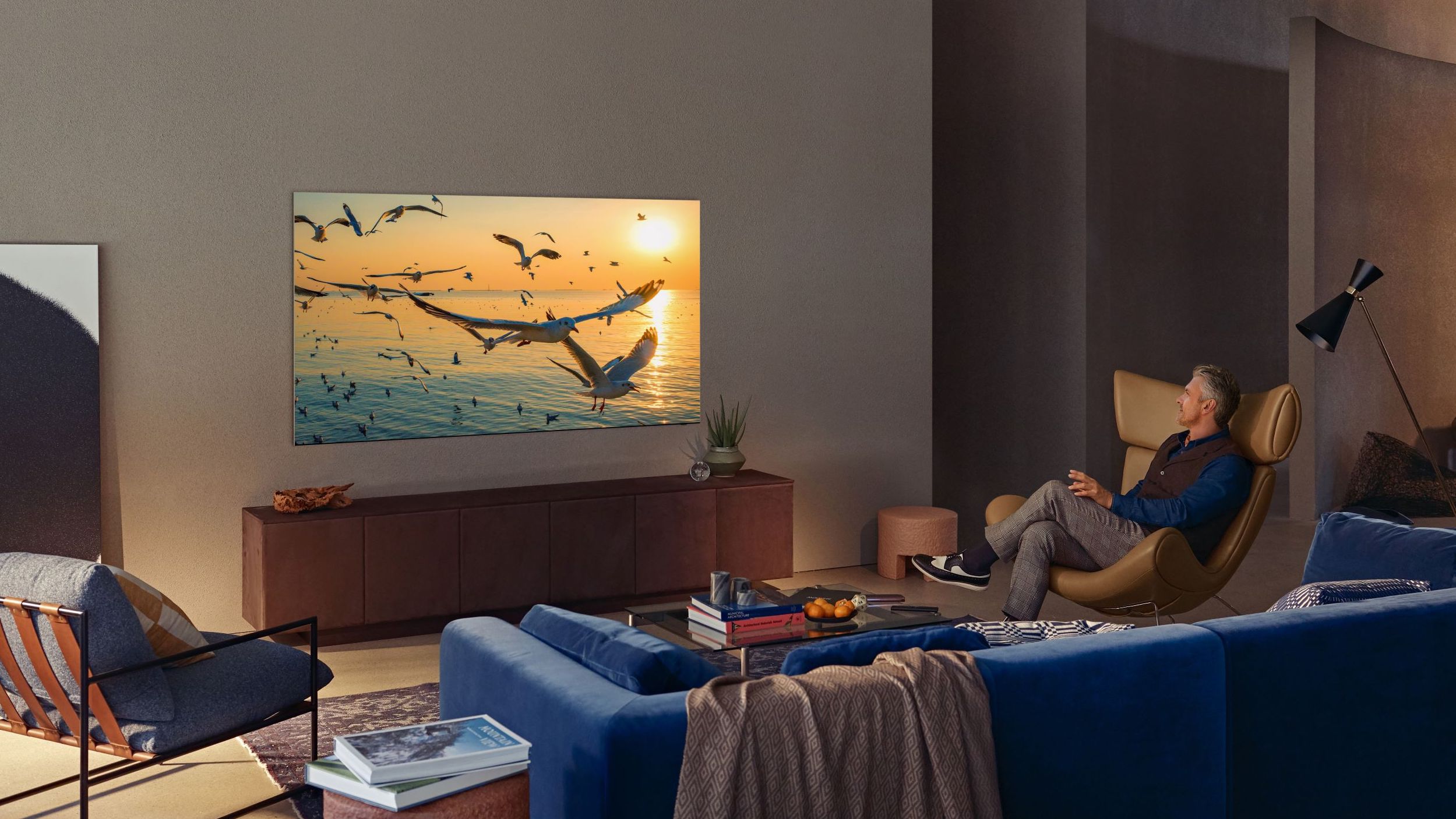
How do Samsung TVs compare to other manufacturers?
Samsung QLED, mini-LED and QD-OLED TVs are known to be some of the brightest, most color-saturated televisions on the planet. With Tizen built-in, they’re well-stocked with the latest apps, and most of the mid-range and high-end models have high levels of quality control. However, budget models make some concessions and generally don’t look as good as models from TCL or Hisense, but are in line with LG’s cheaper TVs.
We feel Sony does a better job overall with motion handling and LG seems to understand how to do upscaling the best of the big three, but Samsung remains competent in all major areas with no real weak spots.
What’s next for the best Samsung TVs?
Samsung’s adventures with mini-LED, micro-LED and QD-OLED are still relatively new, and we’d expect Samsung to continue making more models with those technologies in the coming year. Samsung’s been pushing gaming hard too, with the Xbox cloud gaming app appearing in its newer TVs and a growing number of TVs sporting HDMI 2.1 ports with the key gaming features for the top consoles.
How we test the best Samsung TVs
When it comes to how we test the best Samsung TVs, we’ll put it through all the same tests we do for any other brand, looking at specific criteria such as picture quality, gaming performance, built-in audio and more.
For starters, we put all of the sets in this list to the test with standard definition, 1080p, 4K and even 8K content resolutions (if applicable) to see how they perform. During this, we’ll choose the most accurate picture preset and begin our subjective tests using reference scenes we’re familiar with so we know a TVs strengths and weaknesses.
For picture, we’re looking for bold, dynamic color that isn’t too oversaturated, rich black levels that are accurate and good contrast that’s well-balanced when it comes to light and dark sections of the screen. We’ll also test motion – how does the TV handle motion naturally? Is it smooth? Does it need motion processing such as blur and judder reduction?
Using the variety of sources listed above, we’ll also test a TV’s upscaling abilities on lower-resolution sources to see if it can create a clearer image of SDR movies and TV shows. This is especially important on larger screens as it has to work harder to reproduce the low-res image across a larger surface.
We’ll also test gaming and see if it has the features we’re looking for such as 120Hz, VRR, ALLM and a gaming mode to tailor the gaming experience to its most optimum. These features aren’t strictly necessary, but the more gaming features it has, the better. We’ll also test overall gaming performance and graphics.
After testing audio quality, checking out design and so on, we’ll move onto our objective tests. This is where we use specialized equipment – a test pattern generator, colorimeter, the Leo Bodnar 4K HDMI input lag tester and Portrait Displays’ Calman calibration software – to measure brightness, accuracy, color gamut and input lag on each TV.
To test for brightness, we use the colorimeter to measure the TVs brightness across different sized white window patterns generated by the test pattern generator including sizes such as 2%, 10% and 100%. A 10% window will give us the most realistic idea of peak brightness and how effectively the TV will display HDR highlight, whereas 100% (full screen) will tell us how a TV handles reflections and sustained bright images across the whole screen. We then use Calman to record the results.
Color accuracy and color gamut coverage, in both SDR and HDR, tell us how accurately a TV displays a source’s colors on screen and how much of the color gamut it can cover. We also test grayscale, to see how effective a TV is with darker, grayer tones.
While we always aim for consistency across our testing, some of our reviewers do have different setups and environments. However, we will always use the same level of equipment and follow the same testing criteria and guidelines.
Latest updates to the best Samsung TVs
March 14, 2024
Changed best budget from Samsung BU8500 to Samsung CU8000 due to stock. Expanded how we test section for more detail on testing process.
December 18, 2023
Updated guide format to have new quick menu and lead image, as well as added in the Samsung Q80C as best mid-range.
